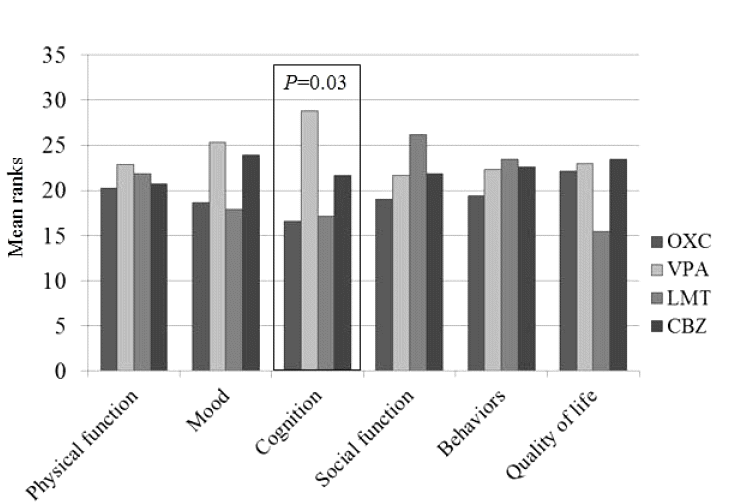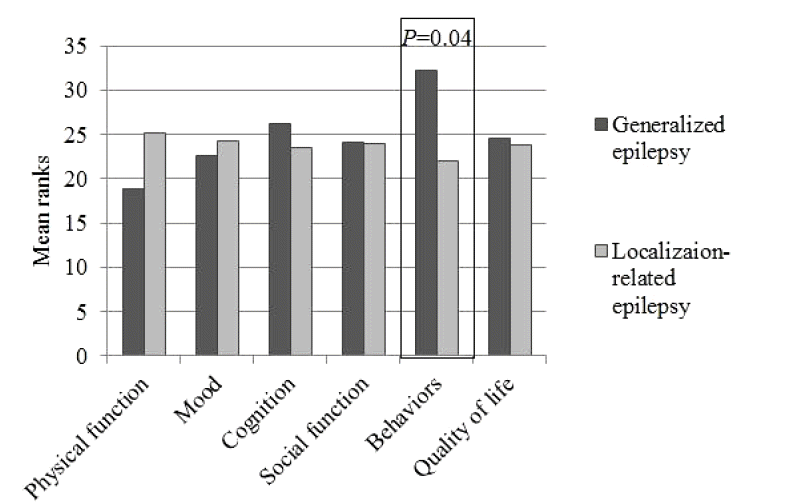Introduction
In clinical practice, many parents express worries about potential negative side effects of antiepileptic drugs (AED) on cognition, behavior, mood, and academic achievement. Surprisingly, parents are more concerned about these side effects than the epilepsy itself. Unfortunately, there is no tool to scale parents’ subjective feelings about their children’s cognitive or behavioral changes. Therefore, we attempted to evaluate the parents’ subjective feelings about changes in cognition, behavior, and quality of life after discontinuation of AEDs using a questionnaire that was filled out by caregivers.
Methods
Subjects
All children who had epilepsy and were tapered off of AEDs between August 1, 2011 and July 31, 2013 were included in our study. AEDs were tapered off one-by-one if seizures remitted for at least 2 years. The last medication was discontinued gradually over a 3-month period. Questionnaires were filled out by the parents whose children were seizure-free over the course of 1 month after AED discontinuation.
Questionnaire
Our questionnaire explored the following 6 domains with 28 questions: two in physical function, seven in mood, nine in cognition, two in social function, seven in behaviors, and one in quality of life. Our questionnaire was a modified questionnaire based on the Korean -Quality of Life in Childhood Epilepsy (K-QOLCE)1 and the Korean-Child Behavior Checklist (K-CBCL).2 Answers are improvements (1 point), similar (0 point) or deteriorations (−1 point) compared to before drug withdrawal. Cronbach’s alpha coefficient of each domain ranged from 0.624 to 0.828 (0.624 is for the social function and all the others measured above 0.7).
Statistical analysis
Kruskal-Wallis and Mann-Whitney U tests were used to compare relations between AEDs and subscales. Mann-Whitney U tests were also used to identify relationships between seizure variables and subscales. Pearson’s correlation coefficients were used for finding correlation between domains. p < 0.05 was considered as significant. All analyses were performed with SPSS (ver. 19.0; SPSS Inc., Chicago, IL, USA).
Results
Subjects and demographic features
Between August 1, 2011 and July 31, 2013, 58 children with epilepsy (age, mean ± SD, 14.1 ± 4.5) visited the pediatric epilepsy clinic at the Korea University Guro Hospital; these included 32 (55.2%) boys and 26 (44.8%) girls. Table 1 shows the demographics of the study population.
Relation between AEDs and subscales
The last AEDs administered to patients are as follows: 18 with valproate (VPA), 19 with oxcarbazepine (OXC), 8 with lamotrigine (LMT), 7 with carbamazepine (CBZ), 5 with topiramate (TPM), and 1 with zonisamide (ZNS). Most patients were on VPA, OXC, LMT, or CBZ (Table 1). Besides improved cognition after terminating VPA treatment (Fig. 1; p = 0.03), no changes were noted after withdrawal of other AEDs or other domains.
Relation between type of epilepsy and subscales
Twelve patients with generalized and 46 with localization-related epilepsy were included in our study. More parents of children with generalized epilepsy reported improvement in behaviors after drug withdrawal (p = 0.04) compared to parents of children with localization-related epilepsy (Fig. 2).
Relation between age at diagnosis of epilepsy and subscales
Parents felt improvement in quality of life after drug withdrawal in the younger age (≤ 6 years old) group (Fig. 3; p = 0.02). No significant difference was noted on other seizure history, such as duration of medication or seizure-free time.
Correlation between quality of life and other domains
Correlating quality of life with the other 5 domains, we found that mood is strongly correlated (r = 0.64, p = 0.00). Cognition and physical function also showed correlations (r > 0.3, p < 0.05), but social function and behaviors had no correlation with quality of life (Table 2).
Discussion
We adopted a one-time measurement method that was evaluated by caregivers and assessed changes in children’s cognition, behavior, and quality of life after drug withdrawal. Withdrawal of most AEDs showed no effect on the 6 domains including physical function, mood, cognition, social function, behaviors, and quality of life. Parents reported significant cognitive improvement only after VPA withdrawal. Parents of children with generalized epilepsy and diagnosed at a younger age (≤ 6 years) reported behavioral improvements and a better quality of life, respectively.
Cognitive effects of antiepileptics have been a major issue in clinical research. However, many studies report inconclusive findings.3 For VPA, dose-related adverse effects may impact neuropsychological performance4 as shown in an in vivo study,5 although several studies report no differences on IQ score among different drugs.6,7 Using the Holmfrid Quality of Life inventory8 written by children and their parents,9 cognitive complaints were evaluated before and after drug discontinuation. No differences were noted for different drug type (phenytoin versus VPA versus CBZ).
Depressive symptoms are shown as the strongest predictors of quality of life,10,11 and we found similar results, that is, mood was strongly correlated with quality of life (r = 0.64). Besides mood, cognition and physical function also might play a role for parents in rating their children’s quality of life based on our study.
Limitations of our study are as follows: 1) small study population; 2) drug concentration monitoring was not applied. In a future study, we can combine both the objective and subjective measures with a larger study population. In conclusion, except valproate in cognition, parents did not feel significant change after discontinuation of different drugs. We propose that other factors such as earlier age at diagnosis of epilepsy or type of epilepsy might influence parents’ subjective feelings about their children’s well-being after drug discontinuation, rather than the drug itself.






